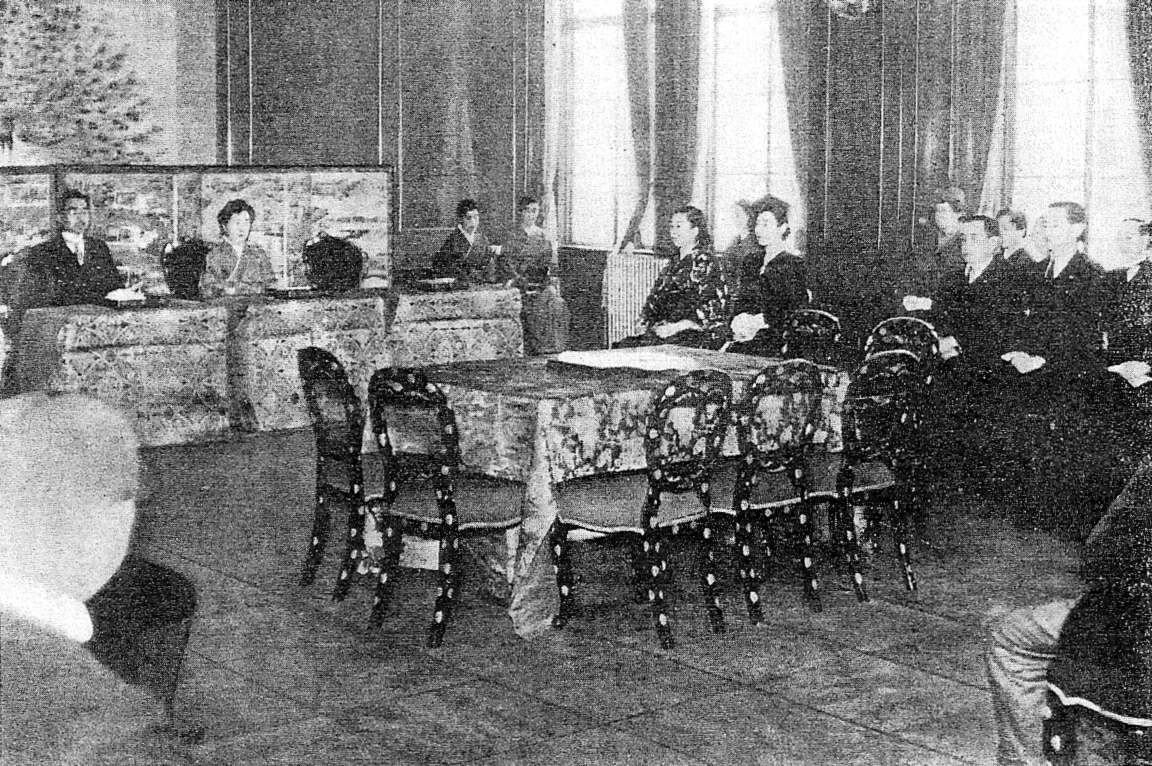Utakai Hajime on:
[Wikipedia]
[Google]
[Amazon]
 The is an annual gathering, convened by the
The is an annual gathering, convened by the
An Imperial Poetic Tradition
, Japan Echo, Diplomatic Agenda, Vol. 26, Nr. 2
 The is an annual gathering, convened by the
The is an annual gathering, convened by the Emperor of Japan
The Emperor of Japan is the monarch and the head of the Imperial House of Japan, Imperial Family of Japan. Under the Constitution of Japan, he is defined as the symbol of the Japanese state and the unity of the Japanese people, and his positio ...
, in which participants read traditional Japanese poetry
Japanese poetry is poetry typical of Japan, or written, spoken, or chanted in the Japanese language, which includes Old Japanese, Early Middle Japanese, Late Middle Japanese, and Modern Japanese, as well as poetry in Japan which was written in t ...
on a common theme before a wider audience. It is held on 1 January at the Tokyo Imperial Palace
The is the main residence of the Emperor of Japan. It is a large park-like area located in the Chiyoda district of the Chiyoda ward of Tokyo and contains several buildings including the where the Emperor has his living quarters, the where va ...
, and is broadcast live on the national television network, NHK
, also known as NHK, is a Japanese public broadcaster. NHK, which has always been known by this romanized initialism in Japanese, is a statutory corporation funded by viewers' payments of a television license fee.
NHK operates two terrestr ...
.
History
The exact origins of the tradition are unclear, though it is known that theEmperor Kameyama
was the 90th emperor of Japan, according to the traditional order of succession. His reign spanned the years from 1260 through 1274.
Genealogy
Before his ascension to the Chrysanthemum Throne, his personal name (his ''imina'') was .
He was t ...
convened a January poetry reading, at the Imperial Palace in Kyoto
Kyoto (; Japanese: , ''Kyōto'' ), officially , is the capital city of Kyoto Prefecture in Japan. Located in the Kansai region on the island of Honshu, Kyoto forms a part of the Keihanshin metropolitan area along with Osaka and Kobe. , the ci ...
, as early as 1267. Sometime during the Edo period
The or is the period between 1603 and 1867 in the history of Japan, when Japan was under the rule of the Tokugawa shogunate and the country's 300 regional '' daimyo''. Emerging from the chaos of the Sengoku period, the Edo period was characteriz ...
the practice became more regular, and since the Meiji restoration
The , referred to at the time as the , and also known as the Meiji Renovation, Revolution, Regeneration, Reform, or Renewal, was a political event that restored practical imperial rule to Japan in 1868 under Emperor Meiji. Although there were ...
of 1869, it has been held almost every year.
Poems written by the general public were admitted for consideration for the first time in 1879. Since 1946, any poet whose work is selected is invited to attend. In 1957 American poet Lucille Nixon
Lucille M. Nixon (December 24, 1908 – December 22, 1963) was a poet and school supervisor from Palo Alto, California. In 1957 she became the first foreigner selected to participate in Utakai Hajime, the Imperial New Year's Poetry Reading of J ...
became the first non-Japanese person to do so., Japan Echo, Diplomatic Agenda, Vol. 26, Nr. 2
Poetry
Poems read at the ceremony belong to the ''tanka
is a genre of classical Japanese poetry and one of the major genres of Japanese literature.
Etymology
Originally, in the time of the ''Man'yōshū'' (latter half of the eighth century AD), the term ''tanka'' was used to distinguish "short poem ...
'' genre.
References
{{Authority control Japanese monarchy Waka (poetry) New Year in Japan